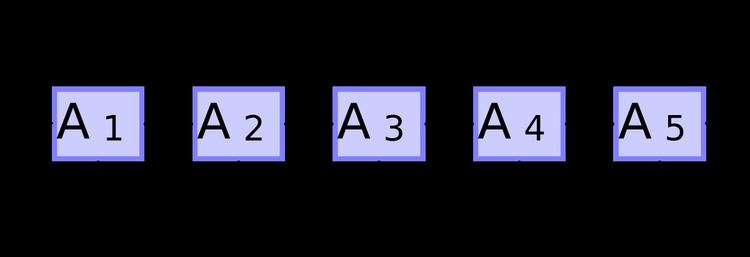 | ||
Matrix product state (MPS) is a pure quantum state of many particles, written in the following form:
Contents
where
It is particularly useful for dealing with ground states of one-dimensional quantum spin models (e.g. Heisenberg model (quantum)). The parameter
For states that are translationally symmetric, we can choose:
In general, every state can be written in the MPS form (with
MPS decomposition is not unique.
Introductions in. and. In the context of finite automata:
Obtaining MPS
One method to obtain MPS is to use Schmidt decomposition N − 1 times.
Greenberger–Horne–Zeilinger state
Greenberger–Horne–Zeilinger state, which for N particles can be written as superposition of N zeros and N ones
can be expressed as a Matrix Product State, up to normalization, with
or equivalently, using notation from:
This notation uses matrices with entries being wave functions (instead of complex numbers), and when multiplying matrices using tensor product for its entries (instead of product of two complex numbers). Such matrix is constructed as
Note that tensor product is not commutative.
In this particular example, a product of two A matrices is:
W state
W state, i.e. a being symmetric superposition of a single one among. Even through the state is permutation-symmetric, its simplest MPS representation is not. For example:
AKLT model
The AKLT ground state wavefunction, which is the historical example of MPS approach:, corresponds to the choice
where the
Majumdar–Ghosh model
Majumdar–Ghosh ground state can be written as MPS with
